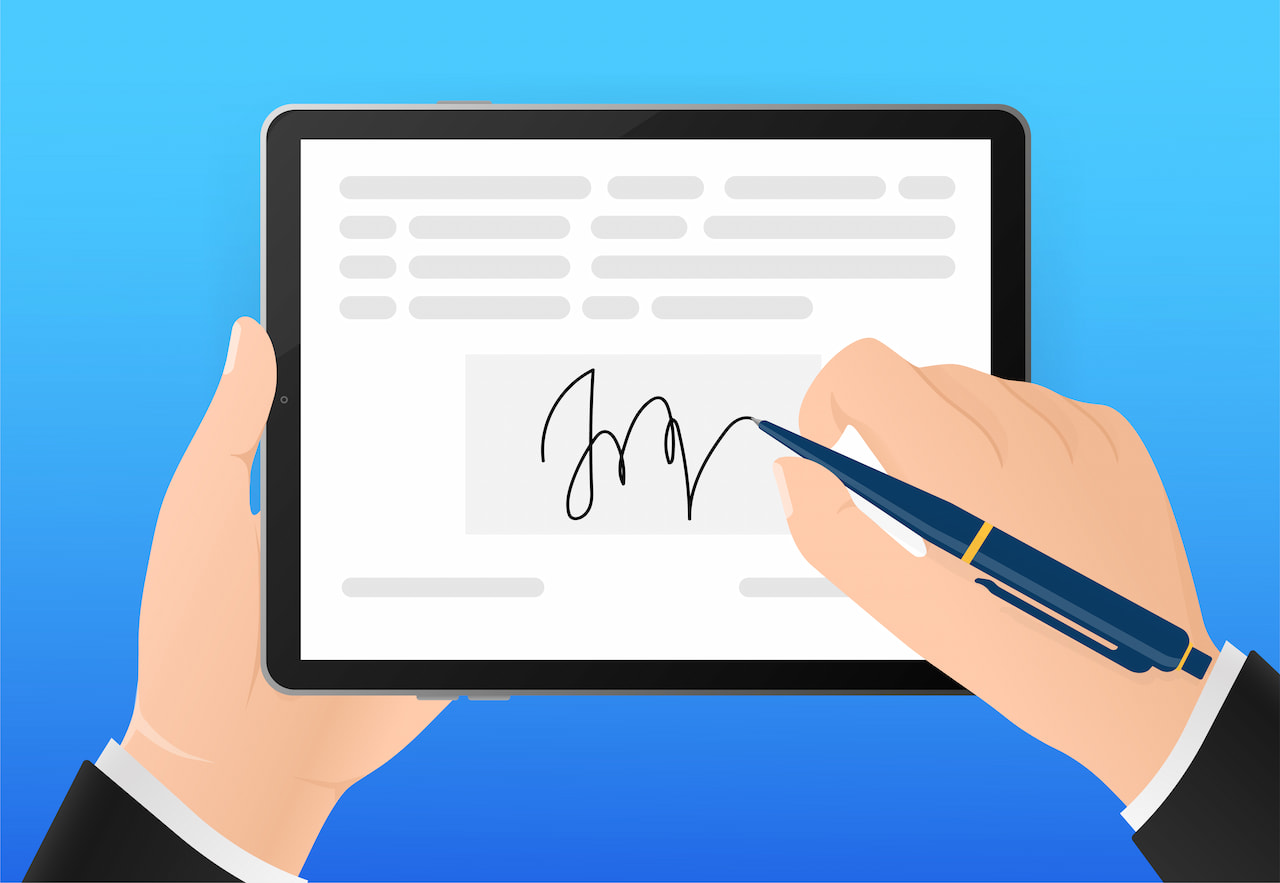
Written by
Drew Gieseke
Drew Gieseke is an aPHR®-certified marketing professional who writes about HR, compliance, and healthcare solutions.
What is an E-Signature? HR Guide to Electronic Signature Technology

How do e-signatures work? With the advent of effective and efficient e-signature technology, HR now no longer needs to spend hours collecting and organizing physical paperwork. The result? A more efficient human resources department that can focus on more strategic tasks—all while saving time and money and preventing costly compliance errors.
What is an E-Signature?
An electronic signature—sometimes known or referred to as an e-signature—is a digital acknowledgment of a contract. In professional work settings, e-signatures are most commonly used during the new hire onboarding process and when an organization has made changes to certain compliance forms and documents.
According to the Society of Human Resources Management (SHRM), this acknowledgment can be expressed in any of the following ways:
- Biometric signatures, such as fingerprint or retina scans
- Digital signatures, which use private keys or certificates
- Signature capture devices, such as tablets and signature pads
- Identity verification services, which use e-mail validation
How Do E-Signatures Work?
Typically, once an employee has finished reading, filling out, or evaluating an important compliance form, they're prompted to electronically "sign" their name. Yet these e-signatures can vary in style and type. Here's how:
- Manual Signature: In some cases, the e-signature is an actual duplication of the person's signature. This usually requires the person to use a trackpad or mouse to imitate writing out their signature, as they would with a pen.
- Preselected Signature: In other cases, online systems permit users to select a pre-generated signature that approximates their own handwriting. They can then fill this signature into the required sections on a compliance document or contract.
- Digitally Printed Name: Finally, other systems permit users to fill in important compliance documents using their printed name, not their actual signature or an approximation of their signature. In these instances, it's common for the system to include a disclaimer that employees acknowledge their printed name will be used as their signature.
How E-Signatures Can Help Simplify HR Tasks and Processes
In general, much of the documentation for which human resources is responsible requires employee signatures. Before e-signatures, these forms meant HR professionals were left to manage stack after stack of physical papers. Now, however, the advent of the e-signature means administrators can significantly reduce the amount of paperwork required for each employee.
Many human resources professionals use the e-signature capabilities afforded by HR and benefits software providers such as BerniePortal. These systems collect and document e-signatures for onboarding forms, employee notices, and benefits enrollment.
Once submitted, the documents and the signatures are stored online without the need for any physical paperwork. By using this technology, administrators can increase efficiencies within human resources management and as a result, may benefit from:
- Decreased time to full productivity
- Fewer interruptions
- Less paperwork
- Automatic documentation
E-Signature Regulations Employers Need to Know
The Electronic Signatures in Global and National Commerce Act (E-Sign Act) defines an electronic signature as a federal law that extends to all 50 states in cases of federal jurisdiction. This act defines three key components of an e-signature:
- It is a digital transaction marked by a sound, symbol, or process.
- It must be “attached to or logically associated with a contract or other record.”
- The individual providing the signature must intend to sign the record.

Written by
Drew Gieseke
Drew Gieseke is an aPHR®-certified marketing professional who writes about HR, compliance, and healthcare solutions.
Related Posts
We just wrapped up another phenomenal Weekdays with Bernie (WWB) Conference!
Employees are the heart and soul of an organization, and valuing their opinions can have...
HR parties of one already have an abundance of tasks to keep up with. From hiring to...
The talent search is no longer a skirmish or a battle. It’s a WAR! As a strategic HR...







Submit a Comment